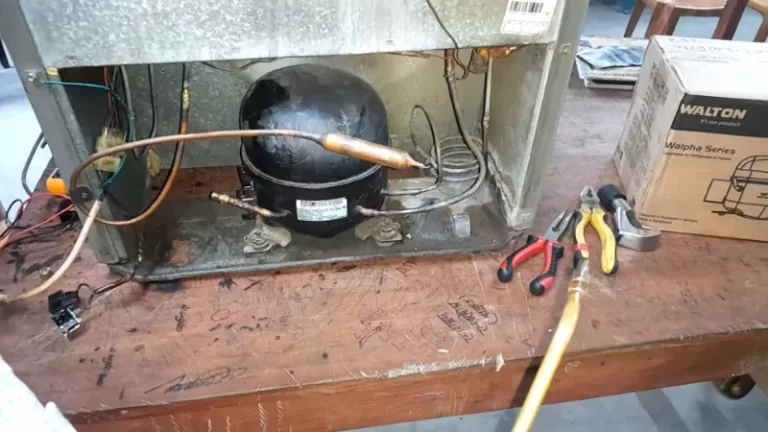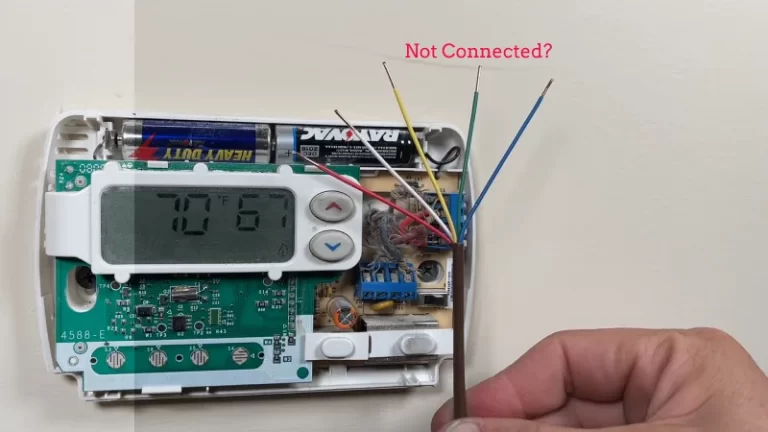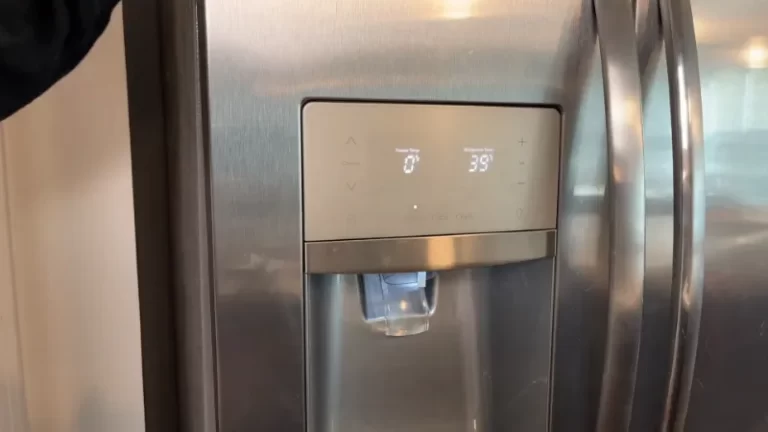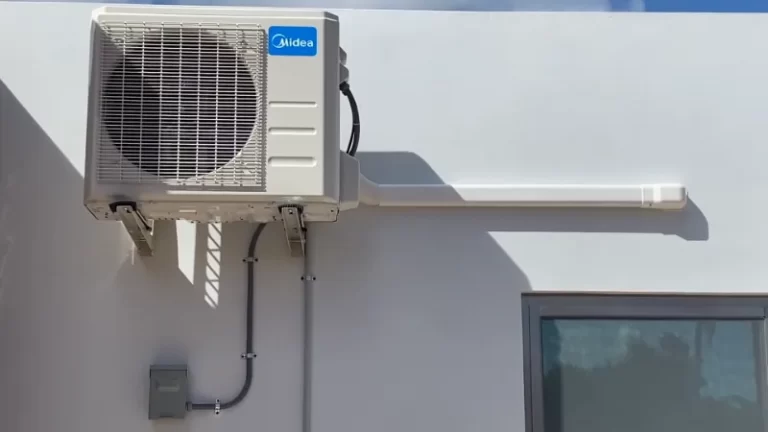Polarity Reversed on Furnace [Symptoms, Causes, Fixes]
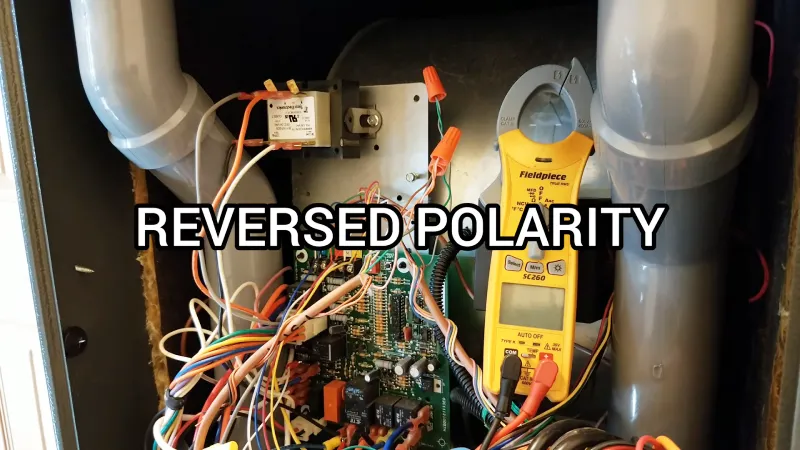
Polarity is a term used to describe the direction in which an electrical current flows. In electrical systems, it is important that the polarity of the wires and components is correct. This ensures safe and proper operation.
A furnace is a type of home heating system. It relies on electricity to power various components, such as the ignition control, blower motor, and control board. If the polarity of the wires connected to a furnace is reversed, it can cause issues with the operation of the furnace. It may even present a safety hazard.
In this article, we’ll discuss the symptoms, causes, and solutions for a furnace with reversed polarity.
You'll Learn About
Is It Possible to Polarity Reversed?
It’s possible that the polarity of the wires connected to your furnace may have been reversed at some point. This could cause the furnace to display a polarity error code. To fix this issue, you’ll need to identify the cause of the reversed polarity and correct it.
One way to start troubleshooting is to check the polarity of the wiring at the furnace using an AC voltmeter. This will allow you to determine if the polarity of the wires is indeed reversed. If it is, you’ll need to determine the cause of the reversed polarity and correct it.
This could involve fixing a wiring error or replacing a damaged component, such as a thermostat or ignition control.
It’s also possible that the issue could be related to the furnace’s control board or flame sensor. In this case, you may need to replace these components to fix the problem.
It’s important to note that any electrical work should be performed by a qualified professional. If you’re not comfortable working with electrical systems, it’s best to hire a licensed electrician to diagnose and fix the problem.
Symptoms of Reversed Polarity on a Furnace
There are several symptoms that may indicate that the polarity of the wires connected to your furnace is reversed.
Flashing Error Code
One of the most common symptoms is a flashing error code or indicator on the control panel of the furnace.
This error code may be accompanied by a message or description. It indicates that there is a problem with the polarity of the wiring. Another symptom of reversed polarity on a furnace is the furnace failing to turn on or operate correctly.
Lack of Power or Incorrect Voltage
This could be caused by a lack of power or incorrect voltage being supplied to the furnace. This is due to the reversed polarity. Other symptoms of reversed polarity on a furnace may include the blower motor running continuously. It may also cause the furnace to cycle on and off repeatedly.
If you experience any of these symptoms, it’s important to identify and correct the issue as soon as possible. This ensures the safe and proper operation of your furnace.
Causes of Reversed Polarity on a Furnace
There are several potential causes of reversed polarity on a furnace. One of the most common causes is a wiring error or mistake during the installation or repair of the furnace. This could involve incorrect connections or switches being made to the wiring. It results in the polarity being reversed.
Another cause of reversed polarity on a furnace could be damage to electrical components, such as thermostats or ignition controls. These components may become damaged due to age, wear and tear, or exposure to extreme temperatures. This can cause the polarity of the wiring to become reversed.
A defective control board or flame sensor can also cause reversed polarity on a furnace. These components are responsible for controlling and regulating the operation of the furnace. If they are not functioning correctly, it can result in the polarity of the wiring being reversed.
What Damage Can Reverse Polarity Cause?
Reversed polarity can cause a range of issues for appliances. These include overheating, internal circuitry and wiring damage, electrical shock hazard, fire hazard, decreased energy efficiency, and premature appliance failure. It is important to have any wiring issues corrected as soon as possible. This avoids potential problems and ensures the safe and efficient operation of appliances.
Overheating of Appliances
Reversed polarity can cause appliances to overheat. This is because the current is flowing in the wrong direction. It can cause a buildup of heat within the appliances. The buildup of heat can cause the internal components of the appliance to become damaged or short-circuit.
Internal Circuitry and Wiring Damage
Reversed polarity can cause damage to the internal circuitry and wiring of appliances. The current flowing in the wrong direction can cause a buildup of heat. This can lead to a short circuit. It can cause damage to the internal components and wiring. This results in a loss of functionality or complete failure of the appliance.
Electrical Shock Hazard
Reversed polarity can pose an electrical shock hazard. When the current is flowing in the wrong direction, the appliance can become energized. This can result in electrical shock to anyone who touches the appliance.
Fire Hazard
Reversed polarity can also pose a fire hazard. The buildup of heat caused by the current flowing in the wrong direction can cause the appliance to overheat. This can result in a fire. This is why it is important to have any wiring issues with appliances corrected as soon as possible.
Decreased Energy Efficiency
Reversed polarity can also decrease the energy efficiency of appliances. When the current is flowing in the wrong direction, it can cause a buildup of heat. This results in the appliance using more energy. This can increase energy costs and contribute to a less efficient and sustainable household.
Premature Appliance Failure
Reversed polarity can result in premature appliance failure. The buildup of heat, electrical shock hazard, and fire hazard can all lead to a loss of functionality. It can also cause complete failure of the appliance. This can result in the need for costly repairs or replacement of the appliance. It can be a significant burden for households.
How to Diagnose and Fix Reversed Polarity on a Furnace
If you suspect that the polarity of the wiring connected to your furnace is reversed, there are several steps you can take to diagnose and fix the problem.
Check the Polarity
The first step in troubleshooting reversed polarity on a furnace is to check the polarity of the wiring using an AC voltmeter. This will allow you to determine if the polarity of the wires is indeed reversed.
To do this, you’ll need to locate the wires connected to the furnace and measure the voltage between them. If the voltage is negative, it indicates that the polarity is reversed.
Correct Any Wiring Errors
Once you’ve confirmed that the polarity is reversed, the next step is to identify and correct any wiring errors or damaged components. This could involve repairing or replacing damaged wiring. It may also involve replacing faulty components such as thermostats or ignition controls.
Replacing Any Damaged Components
If the issue persists after checking the wiring and replacing any damaged components, it may be necessary to replace the control board or flame sensor. These components are responsible for controlling and regulating the operation of the furnace. If they are not functioning correctly, it can cause the polarity of the wiring to become reversed.
It’s important to note that any electrical work should be performed by a qualified professional. If you’re not comfortable working with electrical systems, it’s best to hire a licensed electrician to diagnose and fix the problem.
Tips for Troubleshooting and Fixing Reversed Polarity
Here are a few additional tips for troubleshooting and fixing reversed polarity on a furnace:
Make Sure You Have the Correct Tools and Equipment
To diagnose and fix reversed polarity on a furnace, you’ll need a few basic tools. These include an AC voltmeter, wire stripper, wire nuts, and a screwdriver. Make sure you have these tools on hand before you start working on your furnace.
Check the Wiring Diagram
Each furnace model has a specific wiring diagram that shows how the wires should be connected. If you have access to the wiring diagram for your furnace, it can be helpful to refer to it as you troubleshoot the issue.
Disconnect Power Before Working on the Furnace
Before you start working on your furnace, make sure to disconnect the power to the unit. This will help to prevent any accidents or injuries from occurring.
Test the Thermostat
If you’re experiencing issues with your furnace, it’s a good idea to test the thermostat to see if it’s functioning correctly. To do this, you’ll need to set the thermostat to a temperature that is higher than the current room temperature. See if the furnace turns on. If it doesn’t, the issue may be with the thermostat or the wiring connected to it.
Check for Loose Connections
Another potential cause of reversed polarity on a furnace is loose connections. Make sure to check all of the connections on the furnace. This includes those at the control board, thermostat, and ignition control. Ensure that they are secure.
Clean the Furnace
Over time, dirt and debris can build up inside your furnace. This can affect its performance and cause issues like reversed polarity. Make sure to regularly clean your furnace, including the air filter. This ensures that it is operating efficiently.
Conclusion
In conclusion, the polarity of the wiring connected to a furnace is an important factor in ensuring the safe and proper operation of the system. If the polarity is reversed, it can cause issues with the furnace’s operation. It may even present a safety hazard.
To diagnose and fix reversed polarity on a furnace, it’s important to check the polarity of the wiring using an AC voltmeter. Identify and correct any wiring errors or damaged components. Replace faulty control boards or flame sensors if necessary.
It’s also important to regularly maintain and inspect your furnace to prevent issues such as reversed polarity from occurring. If you’re not comfortable working with electrical systems, it’s best to seek professional assistance for any electrical repairs. It can also cause problem in water heaters.
By taking the necessary precautions and being proactive about maintaining your furnace, you can ensure that it operates safely and efficiently.

